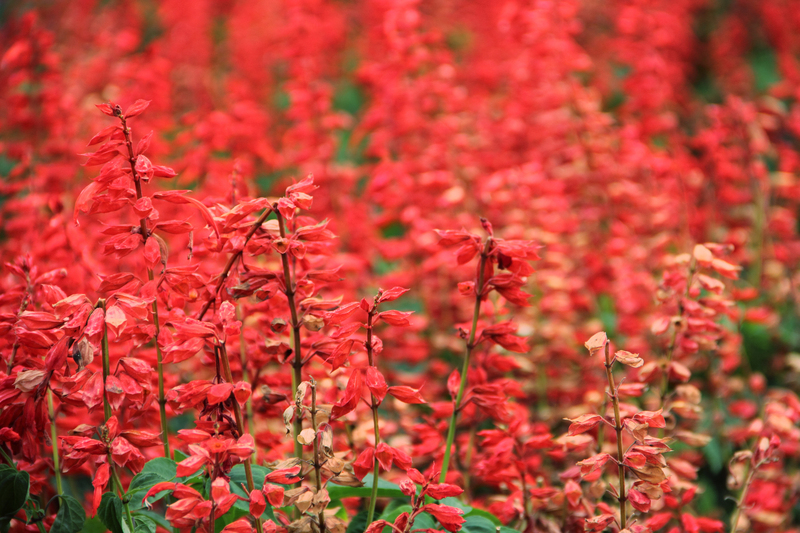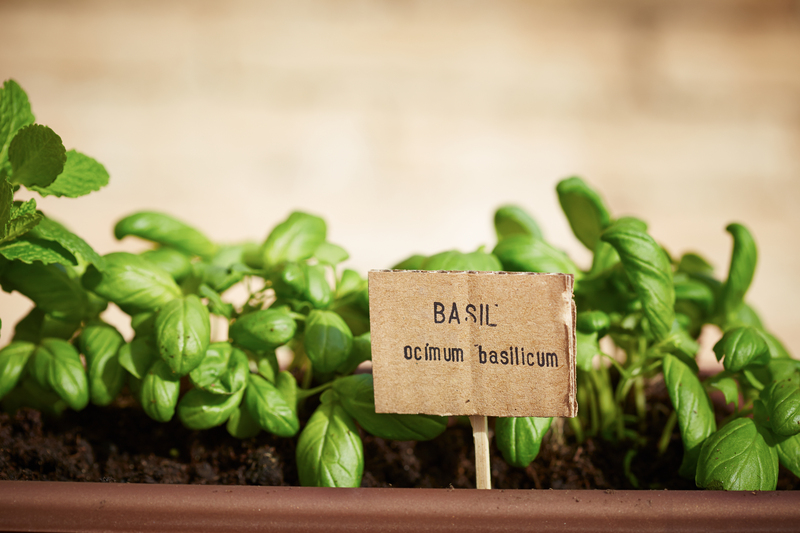How to Build a Dream Garden for Your Little Explorers
Posted on 22/08/2025
How to Build a Dream Garden for Your Little Explorers: The Ultimate Parent's Guide
Imagine a magical oasis right in your backyard, where your children can run, discover, learn, and grow -- all while breathing fresh air and soaking up the sun. Building a dream garden for your little explorers isn't just about planting flowers; it's about creating a sensory-rich, safe, and fun environment that sparks adventure, curiosity, and a love for nature.
In this comprehensive guide, we'll walk you through everything you need to know about how to build a dream garden for your little explorers. From initial planning and design to choosing child-friendly plants and creating unique play areas, you'll find practical tips, creative inspiration, and actionable steps for every stage of the process.
Why Create a Children's Dream Garden?
Before we dive into the steps to designing a dream garden for your little ones, let's explore the powerful benefits it brings:
- Outdoor Play: Encourages physical activity, coordination, and healthy habits.
- Discovery and Learning: Promotes hands-on learning about nature, science, and wildlife.
- Imagination and Creativity: Fosters pretend play, storytelling, and open-ended games.
- Sensory Development: Engages all five senses with textures, scents, colors, tastes, and sounds.
- Family Bonding: Offers quality time outdoors, away from screens and distractions.
Building a kid-friendly garden is a lifelong investment in joy, discovery, and happy memories!

Step 1: Planning Your Dream Garden for Kids
Every incredible garden starts with a thoughtful plan. Catering your backyard space to the unique interests and needs of your children not only maximizes fun but also ensures safety and encourages ongoing curiosity.
Assess and Measure Your Space
Start by clearly marking the boundaries of your garden. Ask yourself:
- How much space do we have? Is it a sprawling lawn or a compact urban yard?
- Are there areas that get plenty of sun, or do you have lots of shade?
- What existing features (trees, fences, patios) should we work around or incorporate?
Understand Your Child's Interests
Every dream garden for children should reflect what excites them. Have a brainstorming session with your little ones, considering these themes:
- Adventure: Tunnels, climbing frames, forts, secret hideouts
- Discovery: Bug hotels, butterfly gardens, bird feeders
- Creativity: Outdoor chalkboards, musical instruments, fairy gardens
- Gardening: Veggie patches, sensory herb beds, sunflower races
- Water Fun: Splash pads, streams, water tables
Talk with your kids, let them doodle ideas, and create a wish list together!
Safety First: A Non-Negotiable Priority
Child safety in the garden comes before design decisions. Consider:
- Fencing and gates: Secure access points and fence heights
- Visibility: Clear lines of sight for supervision
- Surface materials: Soft surfaces under play equipment; no sharp stones
- Non-toxic plants: Choose plants that are safe if touched or tasted
- Chemical-free care: Avoid herbicides and pesticides
Step 2: Designing a Child-Friendly Garden Layout
Designing a backyard dream garden for kids means balancing aesthetics, utility, and imagination.
Create Zones for Different Activities
Divide your space into specific zones. For example:
- Exploration Zone: Nature trails, stepping stones, bug hotel areas
- Play Zone: Slides, swings, obstacle courses
- Quiet Zone: Reading nooks, treehouse hammocks, shady benches
- Gardening Zone: Raised beds, container gardens, compost bins
- Water Zone: Splash mats, water features, mud kitchens
Use low fencing, colored borders, or trails to mark the zones for easy navigation.
Pathways and Natural Boundaries
Create winding paths with stepping stones, wooden rounds, or gravel. Pathways are essential for safe exploration gardens for kids. Add natural boundaries using bushes, logs, or willow screens to define spaces without harsh walls.
Incorporate Levels and Hideaways
Kids adore height and secrecy! If possible, add gentle slopes, low mounds, or sunken areas to your garden. Include:
- Mini hills for rolling or sledding
- Sunken sandpits
- Cozy tipis or play tents
- Climbing frames built around a tree
Creating mini hideouts and adventure points makes your garden a wonderland for imaginative play.
Step 3: Select Safe and Sensory Plants for Your Little Explorers
Your choice of greenery is crucial for dream gardens with children in mind. Pick plants that are:
- Non-toxic and safe to touch or taste
- Colorful with different blooming times for changing seasons
- Textural and scented to excite the senses
- Wildlife friendly for attracting butterflies, birds, and bees
Top Child-Friendly Plants
- Sunflowers: Easy to grow, visually striking, and fun for kids to measure.
- Strawberries: Edible, sweet, and delightful for little ones to pick.
- Lavender: Fragrant, soft to touch, attracts bees and butterflies.
- Mint and Lemon Balm: Safe to nibble, great for sensory play.
- Nasturtiums: Edible flowers and leaves, add vibrant color.
- Snapdragons and Marigolds: Bright, resilient, and bug-resistant.
- Herbs (basil, chives, parsley): Fun for taste tests and cooking projects.
Before planting, double-check all plant species for toxicity based on your local climate and guidance from garden centers or child-safety resources.
Encourage Wildlife Encounters
To make your children's dream garden feel alive, invite in feathered and furry friends:
- Install birdhouses and feeders
- Build a bug hotel with sticks, stones, and bark
- Plant pollinator-attracting flowers
- Create a log pile for hedgehogs or ladybugs
Respect nature -- teach your children to observe gently and never disturb wildlife.
Step 4: Install Kid-Friendly Play Features
The heart of any explorer garden for children lies in its play equipment and interactive features. Here are family favorites:
- Swings and Slides: Classic, durable, and available in many sizes.
- Climbing Frames: Build muscle, coordination, and bravery.
- Treehouses or Huts: Magical hideouts and lookout posts.
- Balance Beams and Stepping Logs: Improves agility and balance.
- Sand and Water Play: Sandpits, water tables, or "pirate beach" zones.
- Mud Kitchen: Outdoor play kitchens for messy baking adventures.
- Chalk Walls or Standing Art Boards: Unleash creativity on a large outdoor canvas.
- Musical Corners: Hang pots, pans, or xylophones from trees for sound exploration.
DIY projects can keep costs down and add a personal touch -- just ensure everything is securely anchored and uses weatherproof, child-safe materials.
Natural Play Materials
- Boulders for climbing
- Stumps for hopping
- Willow arches and tunnels
- Log rounds for seating or stepping
Natural elements help children tune into the wider ecosystem while providing open-ended play opportunities.
Step 5: Foster Creativity and Learning
Your dream garden isn't just for running and jumping -- it's a living classroom! Use these ideas to introduce hands-on learning experiences in your children's garden:
- Plant labelling and tracking growth: Give your kids markers and encourage them to name and document their plants.
- Nature scavenger hunts: Set seasonal challenges to find certain leaves, petals, or insects.
- Observation stations: Provide magnifying glasses or binoculars to study bugs and birds up close.
- Weather charts and rain gauges: Teach about rainfall, temperature, and sustainability.
- Story circles: Lay out logs or cushions for outdoor storytelling sessions or puppet shows.
- Art projects: Collect leaves, stones, and twigs for land art or crafts under the trees.
Integrating creative and educational activities keeps the magic alive in your kid's dream garden year-round!
Step 6: Make Maintenance a Family Adventure
A true dream garden for young explorers thrives when everyone is involved. Children love responsibility, especially when it comes with fun tools and tasty rewards!
- Assign daily or weekly garden jobs based on age: Watering, weeding, harvesting, topping up bird feeders, sweeping paths
- Host "garden day" weekends: Invite friends or family for planting, repairs, or big clean-ups
- Keep a kid-friendly shed or tool box: Fill it with safe, age-appropriate gardening tools and gloves
- Celebrate milestones: Throw harvest parties, take photos of new blooms, or hold sunflower height contests
Step 7: Add Finishing Touches for Magic and Memory-Making
It's the little extras that transform your children's dream garden from "nice" to "unforgettable."
- Install fairy or solar lights for evenings under the stars
- Paint garden stones with your children's names or messages
- String up bunting, colorful flags, or wind chimes
- Mark a "growth wall" to measure your kids over the seasons
- Build a chalkboard menu for today's garden-inspired snacks
- Include a memory box or "treasure chest" for found objects
Encourage your little explorers to personalize the garden with their own artwork, decorations, or secret corners.
Safety Checklist for a Child-Proofed Explorer Garden
- Secure fencing and gates
- Supervise use of all play equipment
- Remove hazardous plants, tools, and chemicals
- Use soft landing materials under all equipment
- Ensure stable handholds, steps, and paths
- Check for sharp or splintering surfaces
- Provide plenty of shade and sun protection
- Keep a basic first-aid kit nearby
As every family and space is unique, frequently re-assess your safety plan -- especially as children grow and use the garden in new ways.

Frequently Asked Questions: Building a Dream Garden for Kids
How can I involve my child in designing our dream garden?
Invite your children to sketch, draw, or make a collage of their perfect garden. Let them pick colors, textures, or special features like a fairy door or pirate ship. The more "buy-in" they have, the more they'll treasure their outdoor sanctuary!
What's the best garden surface for safe play?
Grass is a classic, but you can supplement it with bark chips, rubber mats, or soft sand -- especially under swings and climbing frames. Avoid hard stones, concrete, or uncovered gravel where little knees might land.
How do I keep a small space exciting for my child?
Prioritize vertical features like climbing walls or raised planting beds, use mirrors to create the illusion of space, and make the most of multipurpose elements -- a sandpit that doubles as a stage, or a bench with hidden storage. Even balconies and patios can become whimsical adventure zones with containers, bean teepees, and water tables!
Which garden tools are safe for young kids?
Choose lightweight plastic or wood tools, blunt trowels, and short-handled spades designed for little hands. Supervise all gardening work and store sharp items in a locked shed out of reach.
Conclusion: Let the Adventure Begin!
Building a dream garden for your little explorers is one of the most rewarding gifts you can offer. It inspires a love of the outdoors, stimulates creativity, and supports a lifetime of health and happiness. With thoughtful planning, creativity, and a bit of elbow grease, your backyard can become a lush wonderland filled with laughter, learning, and endless adventure.
Ready to start your journey? Gather your supplies, unleash your imagination, and watch your children's dream garden grow! Share your garden creations or ideas in the comments -- and let the exploring begin!

